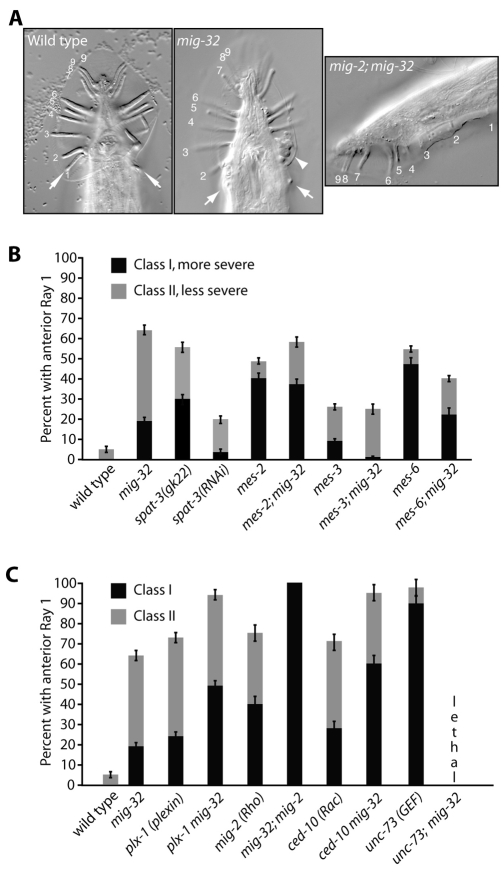Fig. 4.
mig-32 acts parallel to most known pathways that position Ray 1, with the exception of the PRC2 pathway. (A) Ventral views of the tails of male wild-type and mig-32 mutants and a lateral view of a mig-2; mig-32 mutant male. The nine bilateral rays are numbered. Arrows indicate Ray 1 pairs in the wild-type and mig-32 mutants; an arrowhead indicates crumpled Rays 2 and 3 in the mig-32 mutant. (B) The percentage of animals with anterior Ray 1 in wild-type and mutant animals. The severity of the Ray 1 migration defect is categorized as Class I, in which the ray is located anterior to and outside of the normal position of the cuticular fan, or as Class II, in which the ray is anterior but present within the fan (Fujii et al., 2002; Ginzburg et al., 2002). (C) The percentage of animals with anterior Ray 1 in wild-type and mutant animals of the indicated genotypes, scored as in B.

